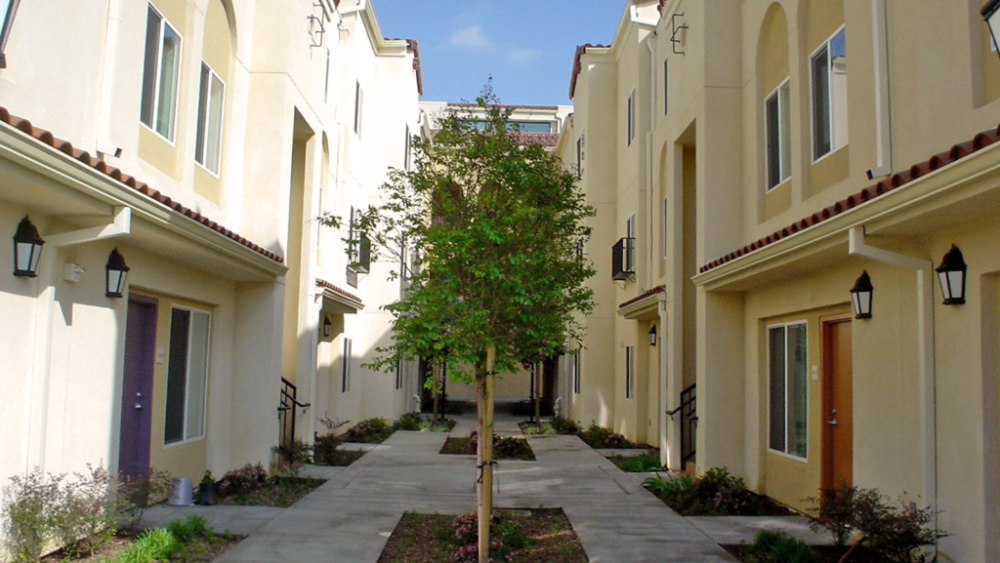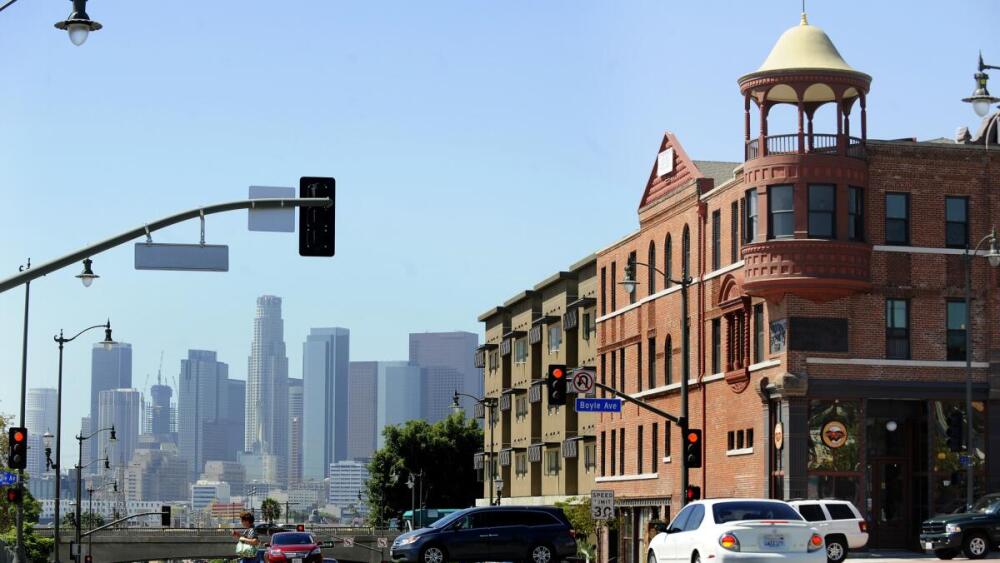On September 30, 2024, green banks, community development financial institutions (CDFIs), nonprofits, tribal organizations, state and local governments, and coalitions nationwide received funding from the Greenhouse Gas Reduction Fund (GGRF), a historic $27 billion investment by the United States federal government to mobilize private capital to combat the climate crisis.
The GGRF was created to fund the building of decarbonization projects, especially in low-income disadvantaged communities. Although the market remains fragmented, the green real estate industry has progressed a long way since the days of the American Reinvestment & Recovery Act (ARRA), the last major infusion of public dollars into the clean energy transition. Today, as the GGRF is activated, Americans have an array of policies, standards, tools, and data, plus more than a decade of experience, as well as much greater political support for action on climate and social equity issues.
Now is the time to align and stack all this infrastructure, learn from experience, fill predevelopment and financing gaps, earn the trust of communities, ready a pipeline of qualified projects, and build a functioning decarbonization market.
I hope our work in Los Angeles can serve as a useful case study for how GGRF might roll out in cities across the country.

Lorena Terrace in the Boyle Heights neighborhood of Los Angeles. The first cohort member to successfully navigate the entire journey was East Los Angeles Community Corporation (ELACC). Two national nonprofit CDFIs helped create ELACC’s innovative financing structure, with HPN’s CDFI, Housing Partnership Fund, leading the transaction and Raza Development Fund as participating lender. The projects also received critical support from the Ahmanson Foundation and the Wells Fargo Foundation.
ELACC
Intentional action
The city of Los Angeles is a longtime leader on environmental, energy, and equity issues. It has assembled a suite of policies and programs to confront a Gordian knot of inter-related and increasingly urgent crises. The city’s work can provide some conceptual scaffolding and serve as a replicable model for how to scale macropolicy goals down to the project level and generate real-world project data that can be reapplied to inform program design, capital formation, product development, and deployment strategies elsewhere.
Los Angeles’ Existing Buildings Energy & Water Efficiency Ordinance, enacted in 2017, provided a policy framework and a timeline for action, whereas the groundbreaking LA100 study, released in 2021, provided the basis for L.A. to announce an ambitious goal of 100 percent carbon-free energy by 2035. How could this clean energy transition benefit all Angelenos, though, when—according to the LA100 Equity Strategies Report—“rebates, incentives, and grid upgrades had disproportionately benefited higher income, home-owning, non-disadvantaged, mostly white, mostly non-Hispanic communities”? And how would the city achieve this goal while also grappling with housing affordability, homelessness, and extreme heat?
To address these inequities in the energy transition, the Los Angeles Department of Water & Power established the Comprehensive Affordable Multifamily Retrofits (CAMR) program in 2022, its first dedicated incentive program for affordable multifamily customers. The department also launched the CoolLA program to help people better cope with the impacts of extreme heat.
Policies and incentives are essential, but as the LA100 report says, “Improving equity requires intentionally designed strategies and actions.”
A dress rehearsal for GGRF
To understand how this ambitious transition could have further real-world rollout requires figuring out how to balance a complex and interconnected set of competing goals.
My experience as program manager for the LA Better Buildings Challenge, which began in 2011 as a roll-up of three ARRA-funded programs, dictated that we needed to show—not tell—what makes decarbonization accessible for residents and providers of affordable multifamily housing. We had to design a pilot program that would answer such questions as:
- What are the economics of a decarb retrofit if we stack all the available incentives?
- Can we bring in third-party financing to fund the upfront investment without putting pressure on rents?
- What would a scalable integrated project development and funding model look like?
- How can we extrapolate from our learnings to inform policy and program development?
- How can all of this information ultimately support GGRF deployment in the region?
These needs meant collaborating deeply with leaders within the affordable housing community; being open about what we knew, and what we sought to learn; building partnerships; facilitating peer learning; and documenting what we learned along the way to create a roadmap others could follow.
We branded the effort Retrofit.LA and set out to build a coalition of the willing.
Working with the Natural Resources Defense Council, Enterprise Community Partners, Southern California Association of Non-Profit Housing, and the UCLA Ziman Center for Real Estate, we enrolled four highly engaged local nonprofit affordable housing providers, which agreed to go on this journey with us.
At the same time, we engaged the Association for Energy Affordability (AEA) to serve as technical project manager, enroll the cohort members in the various incentive programs they implement, scope the projects, provide comprehensive technical assistance, and oversee the installation of the clean technologies being implemented.
With technical resources in place, we worked with each affordable housing provider to select strategic pilot projects from their portfolios that would enable maximum learning. We then collectively committed to regular monthly meetings to hold ourselves accountable and support group learning.
In the course of our brainstorming ways to finance the upfront cost, Housing Partnership Network (HPN) introduced us to Inclusive Prosperity Capital (IPC), a leading nonprofit decarbonization lender. Through a collaborative process, Sustento and IPC linked the Retrofit.LA cohort with a cohort of leading CDFIs, which led to the initial iteration of what is now a new green financing venture between IPC and Housing Partnership Network (HPN): SURE—Sustainable Underwriting for Resilience and Efficiency.
This multilender, learn-by-doing process resulted in the development of a novel revolving credit facility—secured by incentives—that enables affordable housing providers to fund decarbonization retrofits over time across their entire portfolio without disrupting existing financing agreements.
The first cohort member to successfully navigate the entire journey was East Los Angeles Community Corporation (ELACC). Two national nonprofit CDFIs helped create ELACC’s innovative financing structure, with HPN’s CDFI, Housing Partnership Fund, leading the transaction and Raza Development Fund as participating lender. The projects also received critical support from the Ahmanson Foundation and the Wells Fargo Foundation.
As of today, Retrofit.LA cohort members have 10 projects under construction across 300 units, with a second transaction underway using the same financing model.
Much remains for us to learn, but our experience has made a few things clear:
- It is possible to bring in third-party capital to retrofit mid-cycle affordable multifamily housing
- Avoiding costly electrical infrastructure upgrades limits how thorough a retrofit is economically feasible in terms of electrification
- Decarbonization requires a balancing act to align incentives between landlords, tenants, and lenders
- Project development and financing must be integrated to make decarbonization accessible for disadvantaged communities
- Low-cost capital from GGRF will help, but not all customers or projects will be financeable, even with high incentives
- Grants are needed to fill funding gaps, even on projects with high-incentive coverage and 100-percent upfront financing
- Assigning economic value to such cobenefits as improved thermal comfort and indoor air quality could unlock additional opportunities
I hope what we’ve learned through this ground-up approach will support robust creative conversations about ways forward. Where these points resonate, it means we’ve identified common issues—which means there must be a throughline. And that gives me hope.
In the words of Adalia Rodriguez, chief operating officer for ELACC, “You can let your buildings age, or you can do something.”






